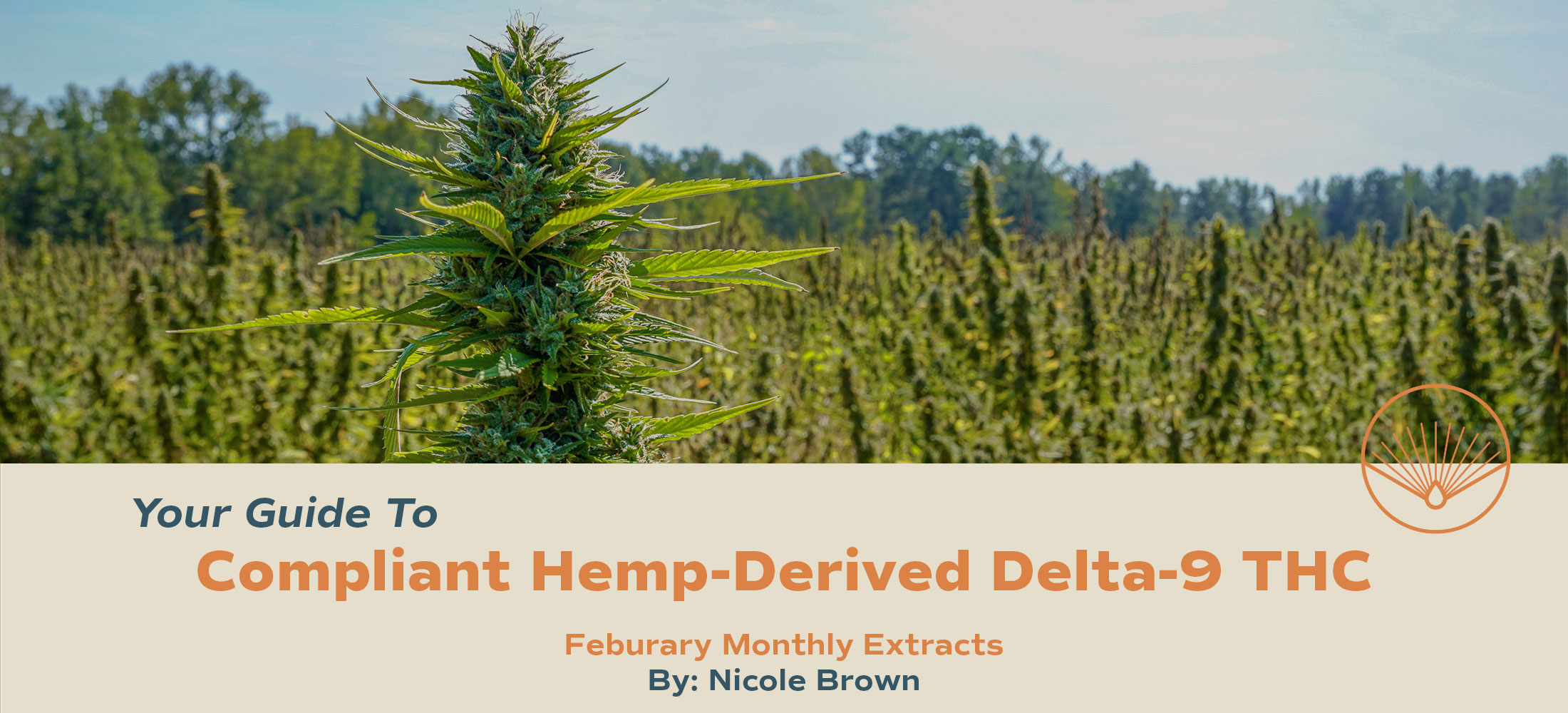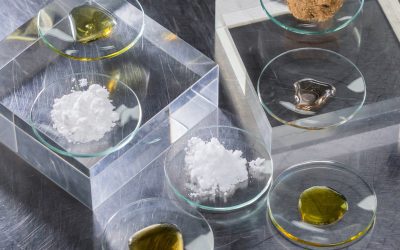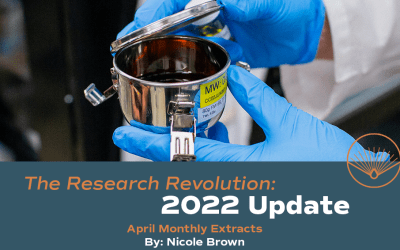Author: Nicole Brown
Feb 3, 2022 – 10 min read
You may have seen, or even tried, gummies or capsules with 5 or more milligrams of Delta-9 Tetrahydrocannabinol (THC) that were marketed as 2018 Farm Bill-compliant. Maybe you ordered them straight to your door—or sent them to a customer.
Within the past several months, U.S. hemp companies have advertised edible products with multiple milligrams of delta-9 THC—the main compound in Cannabis sativa traditionally associated with intoxication—as being available for interstate shipping and sale.
You might be wondering how Hemp-derived Delta 9 THC products are even possible? It’s a lot more simple than you think, and you’ll be surprised that this isn’t more common. Here is what you need to know about Hemp-Derived Compliant Delta 9 THC products.
Compliant, Hemp-Derived Delta 9 THC and Federal Law
Full spectrum hemp products that contain efficacious levels of Delta-9 THC that still fall below the 0.3% THC limit have existed for years. However, more potent versions of these full spectrum products have grown in popularity over the past several months, as we highlighted in our recently published 2022 Trend Report. The recent availability of hemp-derived products containing 2 to 10 mgs of Delta-9 THC stems from a liberal interpretation of some ambiguous language in the 2018 Farm Bill.
After decades of being classified as the same illegal substance, the Farm Bill removed ‘hemp’ and ‘THC in hemp’ from the list of controlled substances, and legalized the growth, manufacture, and sale of hemp and hemp products, so long as those products contain less than 0.3% Delta-9 THC. Specifically, the Farm Bill’s definition of legal hemp extract includes “the plant Cannabis sativa L. and any part of that plant, including … extracts …, whether growing or not, with a delta-9 tetrahydrocannabinol concentration of not more than 0.3% on a dry weight basis.”[1] Anything over this 0.3% threshold is considered marijuana and is still illegal under federal law.
The liberal interpretation of the Farm Bill language is that any hemp-derived product with less than 0.3% Delta-9-THC on a dry weight basis is legal. Such a reading gives brands broad freedom in product design. For example, a typical four gram hemp gummy product could have 10 milligrams of hemp-derived delta-9 THC and still fall below the allowable concentration threshold since 10 milligrams is only 0.25% of 4 grams.
Compliant, Hemp-Derived Delta 9 THC and State Law
As states grapple with how to respond effectively to the hemp-derived Delta-9 THC products being sold openly and online, some may choose to replicate California’s new approach announced within Assembly Bill 45 (AB45), which was signed into law by Governor Gavin Newsom in early October 2021. AB45 allows for hemp-derived cannabinoids, extracts and derivatives in food and dietary supplements with various restrictions. To curtail the growth of new intoxicating products such as delta-8 THC, the bill creates a new definition for “THC or comparable cannabinoid” that includes “[any] tetrahydrocannabinol, including, but not limited to, Delta-8-tetrahydrocannabinol, Delta-9-tetrahydrocannabinol and Delta-10-tetrahydrocannabinol, however derived.” The California Department of Public Health (CDPH) is granted discretion to include or exclude within this definition “any other cannabinoid, except cannabidiol, that the department determines … to cause intoxication.” This provides CDPH with the flexibility to respond quickly to new hemp cannabinoid products sold within the state.
Compliant, Hemp-Derived Delta 9 THC in Finished Goods
Delta-9 THC offers much more than a feeling of euphoria. Research shows that by binding with endocannabinoid receptors in the body, it can help with pain, inflammation, anxiety, depression, poor sleep, nausea, etc. And Delta-9 THC works best when combined with other cannabinoids and terpenes.
If you’re curious if hemp-derived Delta-9 THC products are effective, they are! Although they are compliant and derived entirely from hemp, they can still deliver the familiar Delta-9 THC experience.
Two examples of hemp-derived Delta-9 THC products are Hometown Hero, offering a special cannabinoid blend that incorporates 10mg of Delta-9 THC with 10mg of CBD, and Botany Farms D9 gummies, containing 10mg Delta 9 and 14mg CBD each.
Both companies utilize a technique referred to as Select Spectrum, which means that their products contain a curated blend of specifically isolated cannabinoids that can provide its customers with the benefits of an ‘entourage effect’. This term simply refers to the fact that, although individual cannabinoids may have their own distinctly different properties, when combined, certain cannabinoids will bind together to create an even more potent entourage effect than either of them would on their own.
Unsurprisingly, the FDA takes a dim view of any cannabinoids that have any kind of intoxicating effect if they have not been approved as a pharmaceutical drug. In this type of legal climate, any brand that openly touts its products as being capable of getting their customers ‘high’ might be opening itself up for Federal scrutiny.
Dosage and Serving Size Must Be Solved
As described in the examples above, foods and beverages that contain less than 0.3% THC concentration may nevertheless be intoxicating if too much is consumed. AB45 recognizes this problem but leaves open the question of how CDPH will regulate maximum serving sizes, active cannabinoid concentration per serving size, the number of servings per container and similar questions that should help prevent intoxicating delta-9 products and similar abuses. The bill provides that CDPH “may regulate and restrict the cap on extract and may cap the amount of total THC concentration at the product level based on the product form, volume, number of servings, ratio of cannabinoids to THC in the product, or other factors, as needed.”
Cannabis and hemp industry leaders have warned against “percentage” thresholds of cannabinoids as an appropriate measure for foods and beverages for the reasons described above. California and other states will need to grapple with this issue, which should focus on the prevention of intoxicating hemp products sold as a legal and less-expensive alternative to regulated cannabis.
Conclusion
What we are now witnessing is the complicated and vexing process of trying to unravel the legislative morasse that was created nearly 100 years ago, as well as all of the misconceptions concerning Cannabis that were created over that period of time.
In the end, the issue of which specific effects any given cannabinoid compound may legally deliver is dwarfed by a much larger and more significant question: How long will it take for the Federal government and DEA to re-assign Cannabis from being a Schedule 1 Substance, like heroin and hallucinogens to the same category as alcohol and tobacco, which are both legal, but are considered to have a far greater health risk than Cannabis?
In November of 2020, a new administration was elected into office by U.S. voters that has already expressed a desire to accomplish exactly that. Only time will tell how successful they will be in actually doing so.
Please reach out to us at [email protected] if you are considering adding Full or Select Spectrum products to your product lineup.
Author: Nicole Brown
Feb 3, 2022 – 10 min read
You may have seen, or even tried, gummies or capsules with 5 or more milligrams of Delta-9 Tetrahydrocannabinol (THC) that were marketed as 2018 Farm Bill-compliant. Maybe you ordered them straight to your door—or sent them to a customer.
Within the past several months, U.S. hemp companies have advertised edible products with multiple milligrams of delta-9 THC—the main compound in Cannabis sativa traditionally associated with intoxication—as being available for interstate shipping and sale.
You might be wondering how Hemp-derived Delta 9 THC products are even possible? It’s a lot more simple than you think, and you’ll be surprised that this isn’t more common. Here is what you need to know about Hemp-Derived Compliant Delta 9 THC products.
Compliant, Hemp-Derived Delta 9 THC and Federal Law
Full spectrum hemp products that contain efficacious levels of Delta-9 THC that still fall below the 0.3% THC limit have existed for years. However, more potent versions of these full spectrum products have grown in popularity over the past several months, as we highlighted in our recently published 2022 Trend Report. The recent availability of hemp-derived products containing 2 to 10 mgs of Delta-9 THC stems from a liberal interpretation of some ambiguous language in the 2018 Farm Bill.
After decades of being classified as the same illegal substance, the Farm Bill removed ‘hemp’ and ‘THC in hemp’ from the list of controlled substances, and legalized the growth, manufacture, and sale of hemp and hemp products, so long as those products contain less than 0.3% Delta-9 THC. Specifically, the Farm Bill’s definition of legal hemp extract includes “the plant Cannabis sativa L. and any part of that plant, including … extracts …, whether growing or not, with a delta-9 tetrahydrocannabinol concentration of not more than 0.3% on a dry weight basis.”[1] Anything over this 0.3% threshold is considered marijuana and is still illegal under federal law.
The liberal interpretation of the Farm Bill language is that any hemp-derived product with less than 0.3% Delta-9-THC on a dry weight basis is legal. Such a reading gives brands broad freedom in product design. For example, a typical four gram hemp gummy product could have 10 milligrams of hemp-derived delta-9 THC and still fall below the allowable concentration threshold since 10 milligrams is only 0.25% of 4 grams.
Compliant, Hemp-Derived Delta 9 THC and State Law
As states grapple with how to respond effectively to the hemp-derived Delta-9 THC products being sold openly and online, some may choose to replicate California’s new approach announced within Assembly Bill 45 (AB45), which was signed into law by Governor Gavin Newsom in early October 2021. AB45 allows for hemp-derived cannabinoids, extracts and derivatives in food and dietary supplements with various restrictions. To curtail the growth of new intoxicating products such as delta-8 THC, the bill creates a new definition for “THC or comparable cannabinoid” that includes “[any] tetrahydrocannabinol, including, but not limited to, Delta-8-tetrahydrocannabinol, Delta-9-tetrahydrocannabinol and Delta-10-tetrahydrocannabinol, however derived.” The California Department of Public Health (CDPH) is granted discretion to include or exclude within this definition “any other cannabinoid, except cannabidiol, that the department determines … to cause intoxication.” This provides CDPH with the flexibility to respond quickly to new hemp cannabinoid products sold within the state.
Compliant, Hemp-Derived Delta 9 THC in Finished Goods
Delta-9 THC offers much more than a feeling of euphoria. Research shows that by binding with endocannabinoid receptors in the body, it can help with pain, inflammation, anxiety, depression, poor sleep, nausea, etc. And Delta-9 THC works best when combined with other cannabinoids and terpenes.
If you’re curious if hemp-derived Delta-9 THC products are effective, they are! Although they are compliant and derived entirely from hemp, they can still deliver the familiar Delta-9 THC experience.
Two examples of hemp-derived Delta-9 THC products are Hometown Hero, offering a special cannabinoid blend that incorporates 10mg of Delta-9 THC with 10mg of CBD, and Botany Farms D9 gummies, containing 10mg Delta 9 and 14mg CBD each.
Both companies utilize a technique referred to as Select Spectrum, which means that their products contain a curated blend of specifically isolated cannabinoids that can provide its customers with the benefits of an ‘entourage effect’. This term simply refers to the fact that, although individual cannabinoids may have their own distinctly different properties, when combined, certain cannabinoids will bind together to create an even more potent entourage effect than either of them would on their own.
Unsurprisingly, the FDA takes a dim view of any cannabinoids that have any kind of intoxicating effect if they have not been approved as a pharmaceutical drug. In this type of legal climate, any brand that openly touts its products as being capable of getting their customers ‘high’ might be opening itself up for Federal scrutiny.
Dosage and Serving Size Must Be Solved
As described in the examples above, foods and beverages that contain less than 0.3% THC concentration may nevertheless be intoxicating if too much is consumed. AB45 recognizes this problem but leaves open the question of how CDPH will regulate maximum serving sizes, active cannabinoid concentration per serving size, the number of servings per container and similar questions that should help prevent intoxicating delta-9 products and similar abuses. The bill provides that CDPH “may regulate and restrict the cap on extract and may cap the amount of total THC concentration at the product level based on the product form, volume, number of servings, ratio of cannabinoids to THC in the product, or other factors, as needed.”
Cannabis and hemp industry leaders have warned against “percentage” thresholds of cannabinoids as an appropriate measure for foods and beverages for the reasons described above. California and other states will need to grapple with this issue, which should focus on the prevention of intoxicating hemp products sold as a legal and less-expensive alternative to regulated cannabis.
Conclusion
What we are now witnessing is the complicated and vexing process of trying to unravel the legislative morasse that was created nearly 100 years ago, as well as all of the misconceptions concerning Cannabis that were created over that period of time.
In the end, the issue of which specific effects any given cannabinoid compound may legally deliver is dwarfed by a much larger and more significant question: How long will it take for the Federal government and DEA to re-assign Cannabis from being a Schedule 1 Substance, like heroin and hallucinogens to the same category as alcohol and tobacco, which are both legal, but are considered to have a far greater health risk than Cannabis?
In November of 2020, a new administration was elected into office by U.S. voters that has already expressed a desire to accomplish exactly that. Only time will tell how successful they will be in actually doing so.
Please reach out to us at [email protected] if you are considering adding Full or Select Spectrum products to your product lineup.




